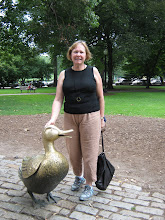Today is International Seal Day, which is focused on celebrating and protecting these majestic marine mammals 🦭 While today is dedicated to seals, fittingly, this week is also Sustainable Seafood Week, which highlights an important action we can take to protect seals and marine life in the wild. Choosing MSC-certified seafood prevents the overfishing of our oceans and protects wild seals 🐟
This is from Instagram posted today from Taronga Zoo here in Sydney. They also had an article in the newspaper today about a sea lion pup that has been born at the zoo. I plan to use it with my Year 2 literacy group next week as we are looking at endangered Australian mammals and what can be done to ensure their futures. This is where I learned that it is International Seal Day.Seals, whose scientific name is Pinnipedia, are found on every continent on Earth, principally in cold water environments. There are 33 different species alive today, from gigantic ones, such as the elephant seal, and small ones like the Baikal seal. These semi-aquatic marine mammals are thought to be close relatives to bears and the animal group that includes weasels and otters.
While they look similar, sea lions are not seals. Belonging to the same suborder known as Pinnipedia, sea lions, seals, fur seals, and walruses share a common classification as 'pinnipeds', derived from the Latin words for fin or flipper-footed. Sea lions have little ears (seals only have ear holes), longer flippers and are generally a lot rowdier than their seal counterparts. International Sea Lion Day is on the 30th May.
The library doesn't have a lot of books about seals, but these have lovely illustrations and will give you information and a story.
Lying about on the sand like a fat sunbather, seals might seem like slow, dozy creatures – but nothing compares with their grace and speed when they're underwater! Seals can dive like rockets and twist like a dancer. They can stay underwater for up to 15 minutes.
is the incredible story of Elizabeth, a real-life elephant seal who made her home in the Avon River in the city of Christchurch, New Zealand. When Elizabeth decides to stretch out across a two-lane road, the citizens worry she might get hurt or cause traffic accidents, so a group of volunteers tows her out to sea. But Elizabeth swims all the way back to Christchurch. The volunteers catch her again and again—each time towing her farther, even hundreds of miles away—but, still, Elizabeth finds her way back home.
Seal has made his home in the waters of a coastal village, but he often finds himself trapped and ensnared in the plastic rubbish filling the Bay. Fortunately, he is rescued by Lizzie and Grandpa Dave.
A boy and his grandfather watch as a baby seal is born on the rocks near their home and from that day a special friendship is created between them. Despite his disability, the boy is a keen surfer, and he enjoys many afternoons surfing with the seals. One day, however, he gets into trouble in rough seas, and the young seal saves him.
Maggie is on holiday with her aunt and uncle. Meanwhile her mum waits for Maggie’s baby brother to come home from hospital. On a walk across the wild Norfolk shoreline, Maggie finds a seal pup stranded on the beach, all alone. She is the sweetest thing Maggie has ever seen. But without her mum, how will the seal survive? Who will rescue her and will she ever be returned to the sea, and find her family again?







No comments:
Post a Comment